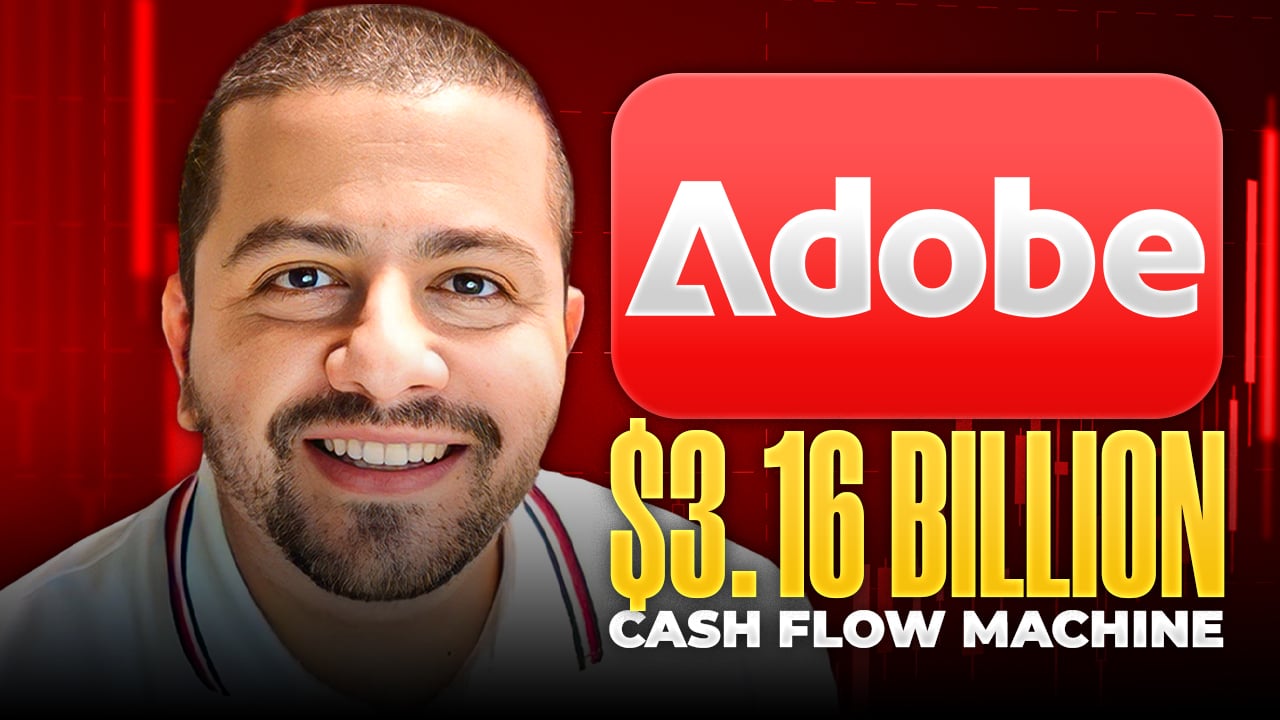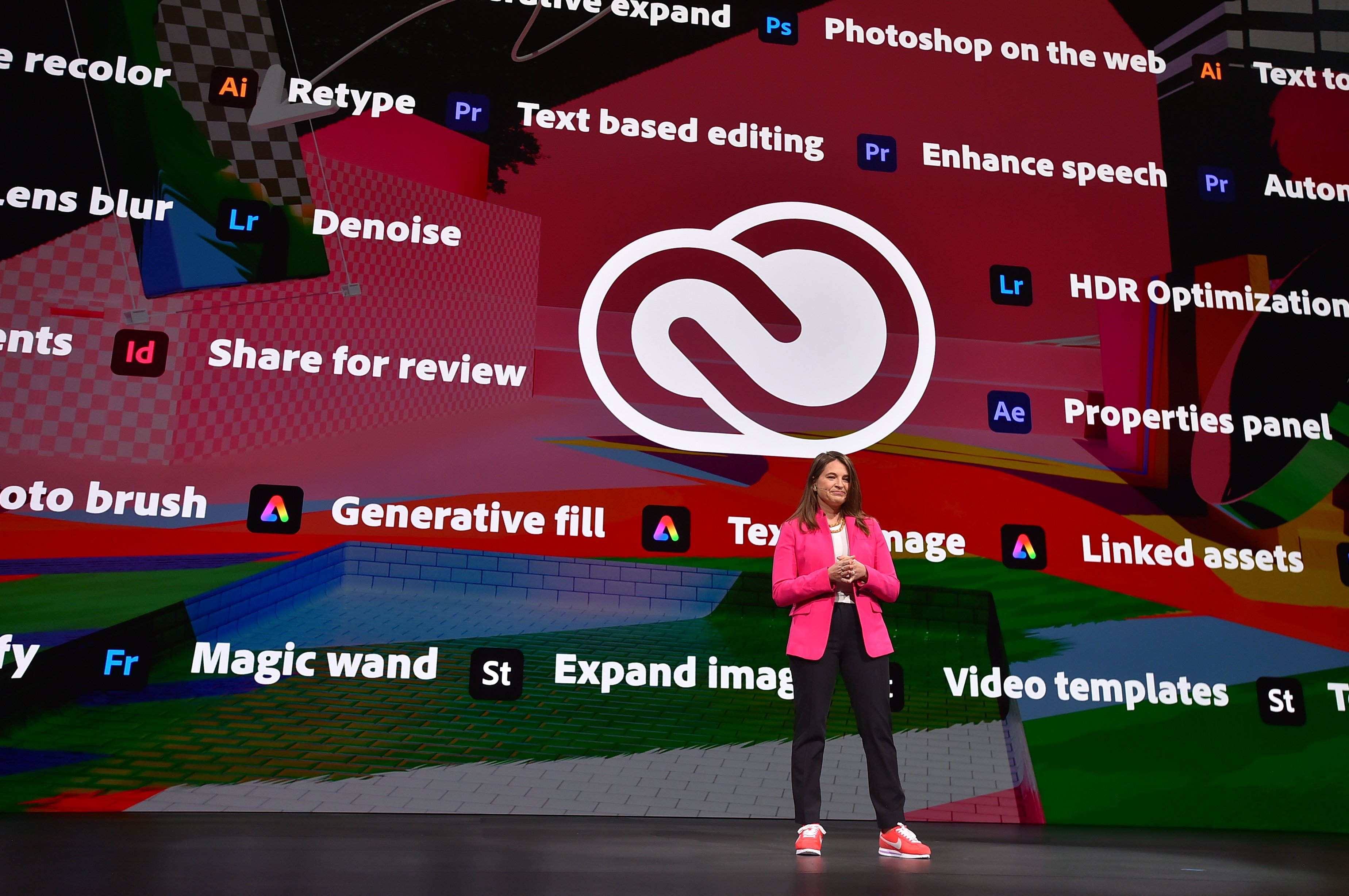Artificial intelligence (AI) demands increased computing power, which has been a boon for technology infrastructure and semiconductor companies like Nvidia. These companies benefit from the need to run complex AI models no matter where they come from.
Enterprise-software companies like Adobe (ADBE 0.18%) are challenged because they have to prove AI is worth investing in. In other words, users need to like and pay for what Adobe is building. The company's recent results indicate its strategy is working.
Investors cheered Adobe's second-quarter fiscal 2024 financial results and updated full-year guidance -- sending the stock soaring on Friday. The earnings call was, in many ways, similar to the Q1 call. Only this time, Adobe's AI investments translated to impeccable results and high margins.
Even after the run-up, Adobe remains an underrated growth stock to buy now. Here's why.

Image source: Getty Images.
Driving value
It's a mistake to get too caught up in a company's quarterly results. But I think a few years from now, we may look back at this one as a turning point for Adobe.
Document Cloud revenue grew 19% as Adobe added a record $165 million of new Document Cloud annualized-recurring revenue. Digital Experience subscription revenue grew 13% year over year, and Creative Cloud grew revenue 11% on a constant-currency basis. Commenting on its Creative Cloud segment, Adobe management said it experienced "strong renewals as customers migrate to higher-value, higher [average revenue per user] ARPU Creative Cloud plans that include Firefly entitlements."
Adobe has implemented its generative AI tool, Firefly, across its flagship products. It's encouraging to see that Firefly is driving customers to spend more money.
Up until now, Adobe's expenses were outpacing its gross profit. But this quarter, operating income increased at a higher rate than gross profit -- boosting margins and indicating the company is improving its profitability and managing costs. Adobe booked a generally accepted accounting principles (GAAP) operating margin of 35.5% in the quarter and a non-GAAP operating margin of 46%. For context, Adobe has averaged a GAAP operating margin in the low 30% range for the last five years.
Commercial subscriptions continue to be a standout for Adobe. But the company is also gaining interest and usage for its Express mobile and Express for Business offerings, which is an all-in-one app that leverages AI to help users create graphics, PDFs, and short-form videos.
Longer term, the key for Adobe will be catering to all customers -- commercial, individual, and education -- across all categories. A business may be able to justify a higher price tag and experiment with new tools. However, Adobe needs to find a pricing structure for different markets. Monitoring the adoption of an all-in-one tool like Adobe Express will be a good way to gauge interest in generative AI from individual users, so it's worth following up on future investors' presentations.

NASDAQ: ADBE
Key Data Points
Adobe's buybacks are powering earnings growth
Adobe, a cash cow with recurring revenue, can afford to make long-term investments and buy back stock. Its earnings growth can come from net income and reducing the outstanding share count to boost earnings per share.
Adobe's updated guidance calls for non-GAAP earnings per share of $18.00 to $18.20 -- giving it a price-to-earnings ratio of 29 based on its 2024 target and current stock price of around $525 a share. Adobe spent $2.5 billion on buybacks in the quarter. Last quarter, it announced a $25 billion buyback program that runs through fiscal 2028. That level of buybacks is substantial, considering Adobe has a market cap of $235 billion. It also indicates that Adobe has extra dry powder and that its spending isn't out of control.
Another advantage of an enterprise-software company like Adobe is that it doesn't rely on debt to operate the business. Low cost of goods sold and recurring revenue mean that the main costs are operating expenses like sales, marketing, research, and development.
Adobe has more cash and cash equivalents on its balance sheet than long-term debt. And it doesn't pay a dividend. So, when the company generates outsized gains, you can expect it to reinvest those profits back in the business and accelerate organic growth, make acquisitions, or repurchase stock. The capital-light nature of the business is a key advantage compared to leveraged companies that are pressured to use outsized profits to pay down debt.
A major risk worth considering
Analysts have been direct with Adobe management on the last couple of earnings calls. Adobe was grilled about its lack of profitability and weak guidance in Q1. This quarter, there was a focus on enterprise software monetizing AI and the vulnerability of a user-based subscription model.
Arguably, the most important moment from the earnings call was when CEO Shantanu Narayen responded to an analyst question on AI becoming so strong that it reduces the need for larger user-based marketing teams -- in other words, the existential threat of AI generating content on its own, so there is no longer a need for a subscription model based on the number of users. He said:
If the value of AI doesn't turn to inference and how people are going to use it, then I would say all of that investment would not really reap the benefit in terms of where people are spending the money. And so we're always convinced that when you have this kind of disruptive technology, the real benefits come when people use interfaces to do whatever task they want to do quicker, faster, and when it's embedded into the workflows that they're accustomed to because then there isn't an inertia associated with using it. So with that sort of as a broad segment, I am a big believer that generative AI is going to, for all the categories that we're in, it's actually going to dramatically expand the market because it's going to make our products more accessible, more affordable, more productive in terms of what you -- what we can do.
Narayen is making the case that chip companies have benefited from AI, but the real impact comes from what generative AI can do to improve software applications. That may be true, but even if AI doesn't completely replace marketing teams, efficiency improvements could still lead to fewer software licenses. If one user can accomplish the tasks that used to take two or three users, this can lead to higher revenue per subscriber but fewer overall subscribers.
This isn't an Adobe-specific problem but a concern for all enterprise-software companies that depend on recurring revenue charged by the number of users. Uncertainty regarding whether AI will be a net positive or negative over the long term is one of the biggest question marks impacting the investment thesis.
Think big picture with Adobe
When building an investment thesis, it's important to understand the bear case and why the investment may not work out. A couple of years ago, Adobe's biggest red flag was a lack of growth and innovation. Today, Adobe is returning to growth and has a clear trajectory for monetizing AI, but there's the risk of too much innovation weakening its business model.
It all comes down to which risk you view as greater. Innovative companies usually win out over the long term, and I think Adobe can adapt its pricing model over time if necessary. So, taking a step back, the investment thesis has gotten much stronger, and the financials look better, too.
Adobe is my top AI stock to buy now because I think the valuation is reasonable, and there's untold market potential for building AI creative tools. If Adobe can build tools that can handle a larger share of a marketing campaign or content creation for a social media account, the benefits would be so valuable that they could overcome user-volume declines. It's too early to tell how it will play out, but the risk and potential reward make sense for patient investors.






